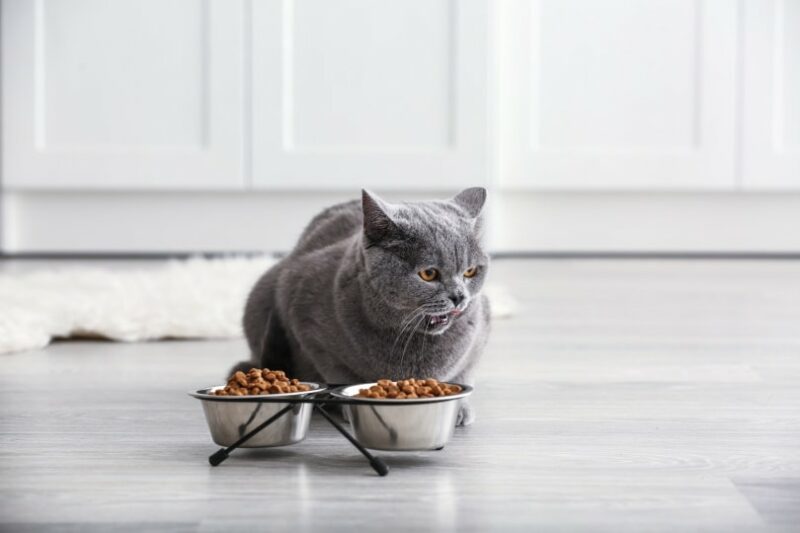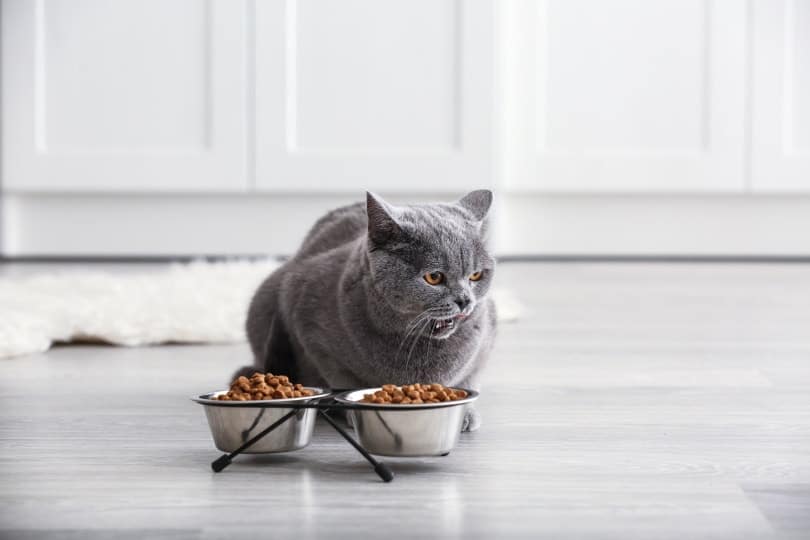
Fortunately, for owners of finicky felines, plenty of options are available, and below, we have listed 10 of the best dry cat foods in the UK with reviews, including those for kittens, adults, and seniors.
A Quick Look at Our Favorites in 2024
| Image | Product | Details | ||
|---|---|---|---|---|
| Best Overall |
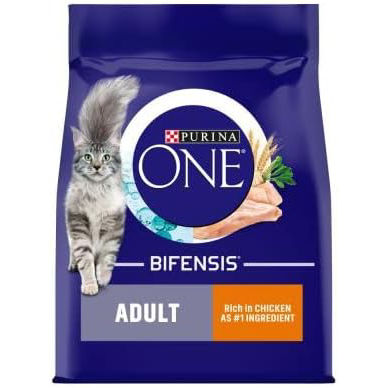
|
Purina One Adult Dry Cat Food |
|
CHECK PRICE |
| Best Value |
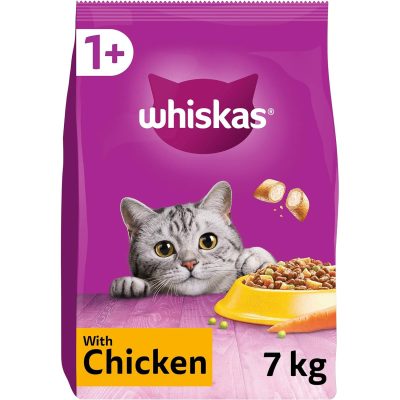
|
Whiskas 1+ Complete Dry Cat Food |
|
CHECK PRICE |
| Premium Choice |
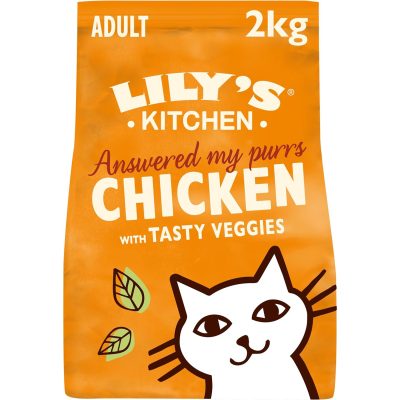
|
Lily’s Kitchen Chicken Adult Dry Cat Food |
|
CHECK PRICE |
| Best for Kittens |
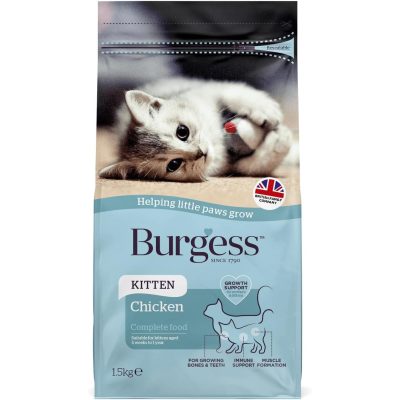
|
Burgess Dry Kitten Food |
|
CHECK PRICE |
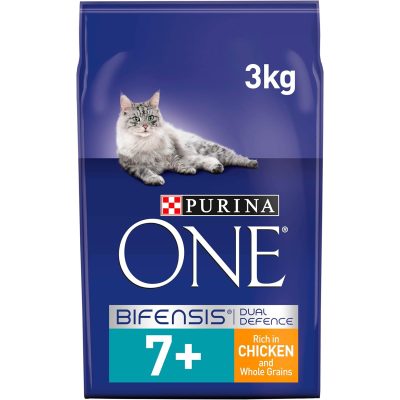
|
Purina One Senior Chicken |
|
CHECK PRICE |
The 10 Best Dry Cat Foods in the UK
1. Purina One Adult Dry Cat Food – Best Overall

| Life stage | Adult |
| Flavor | Chicken |
| Volume | 6 kilograms |
| Protein | 34% |
Purina One Adult Dry Cat Food is a chicken-flavored dry kibble. Its primary ingredient is chicken, and it consists of 34% protein, which makes it a high-protein food. This is a grain-inclusive recipe, so it may not be suitable for cats with grain intolerances. Purina claims that owners will notice a positive difference in their cat’s health after 3 weeks of changing to this brand.
It is suitable for all adult cats aged 1 year and over. It contains chicory root as a probiotic. Plus, it hasfish oil for healthy skin and fur and is fortified with minerals to ensure a healthy and balanced diet.
Purina One is about average in terms of price, but it is popular, has a high protein content, and its main ingredient is chicken, so it is our choice as the best overall dry cat food in the UK.
- Primary ingredient is chicken
- Includes chicory root as a probiotic
- Fish oil is a good source of omega-3 fatty acids
- Contains 17% grains
2. Whiskas 1+ Complete Dry Cat Food – Best Value
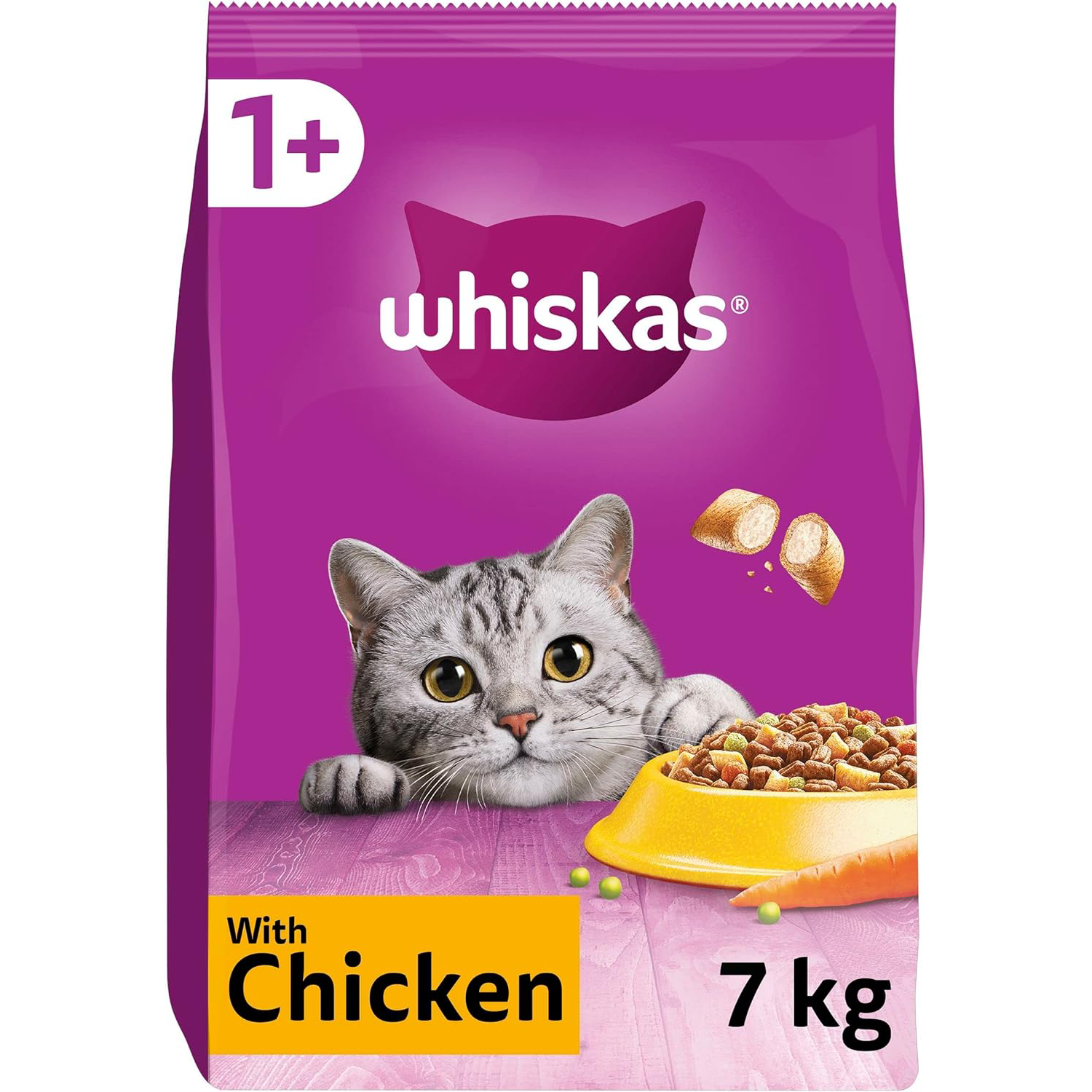
| Life stage | Adult |
| Flavor | Chicken |
| Volume | 7 kilograms |
| Protein | 30% |
Whiskas 1+ Complete Dry Cat Food features a kibble with a hard outer casing with a softer, chewy center and biscuits containing vegetables and other ingredients. Whiskas is inexpensive and has 30% protein, making it the best dry cat food in the UK. It also has decent levels of omega-6 and zinc that help promote a healthy and luscious coat. There is also vitamin A, which is important for maintaining good vision. The hard kibble shell also helps prevent tartar build-up on the teeth.
Although the food is inexpensive and has a reasonable protein content, its primary ingredient is cereal, while “meat and animal derivatives” comprise 29% of the ingredients. Because cats are obligate carnivores, they should get most of their protein from meat-based ingredients. This also means they can eat organs and other parts of the animal, so we would rather see the meat ingredients more clearly listed.
- Cheap
- Vitamin A helps maintain good vision
- Omega 6 and zinc promote a healthy coat
- Main ingredient is cereal
- Obscure meat ingredients
3. Lily’s Kitchen Chicken Casserole Complete Adult Dry Cat Food – Premium Choice
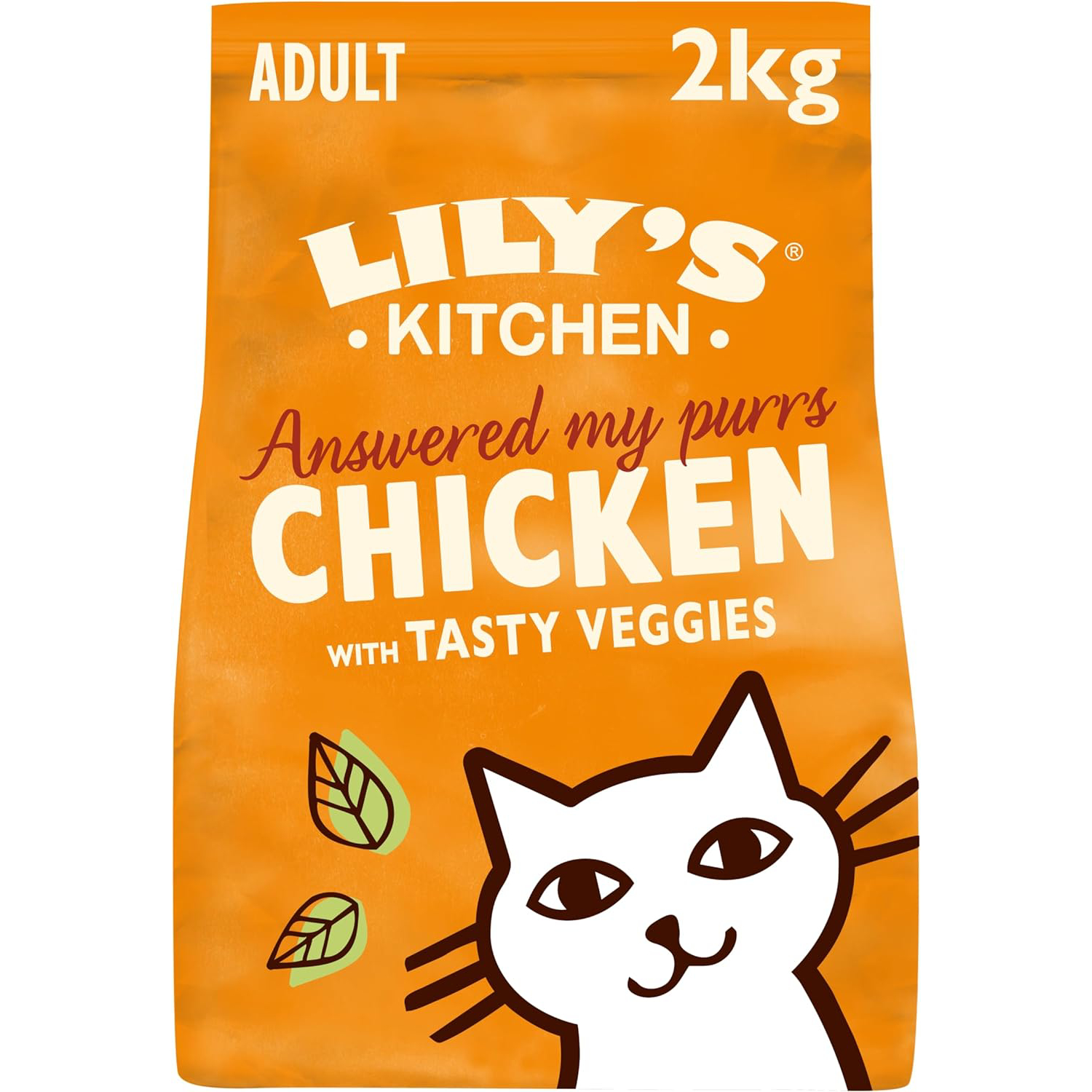
| Life stage | Adult |
| Flavor | Chicken |
| Volume | 1 kilograms |
| Protein | 30% |
Lily’s Kitchen Chicken Casserole Complete Adult Dry Cat Food is a premium dry cat food that consists of 68% chicken and 30% protein, most of which comes from meat rather than less beneficial plant-based sources. The ingredients also include minerals and added vitamins, including omega fatty acids.
The food is expensive but uses natural ingredients with no added sugar. The high meat content is beneficial because it meets your cat’s natural dietary requirements and makes the food more appealing and palatable to cats, too.
The high price makes Lily’s Kitchen Chicken Casserole Complete Adult Dry Cat Food a good choice as a supplement to wet food instead of on its own, but some people might prefer to feed it exclusively to their cats.
- 68% chicken
- Uses natural ingredients
- Naturally grain-free recipe
- Expensive
4. Burgess Dry Kitten Food – Best for Kittens
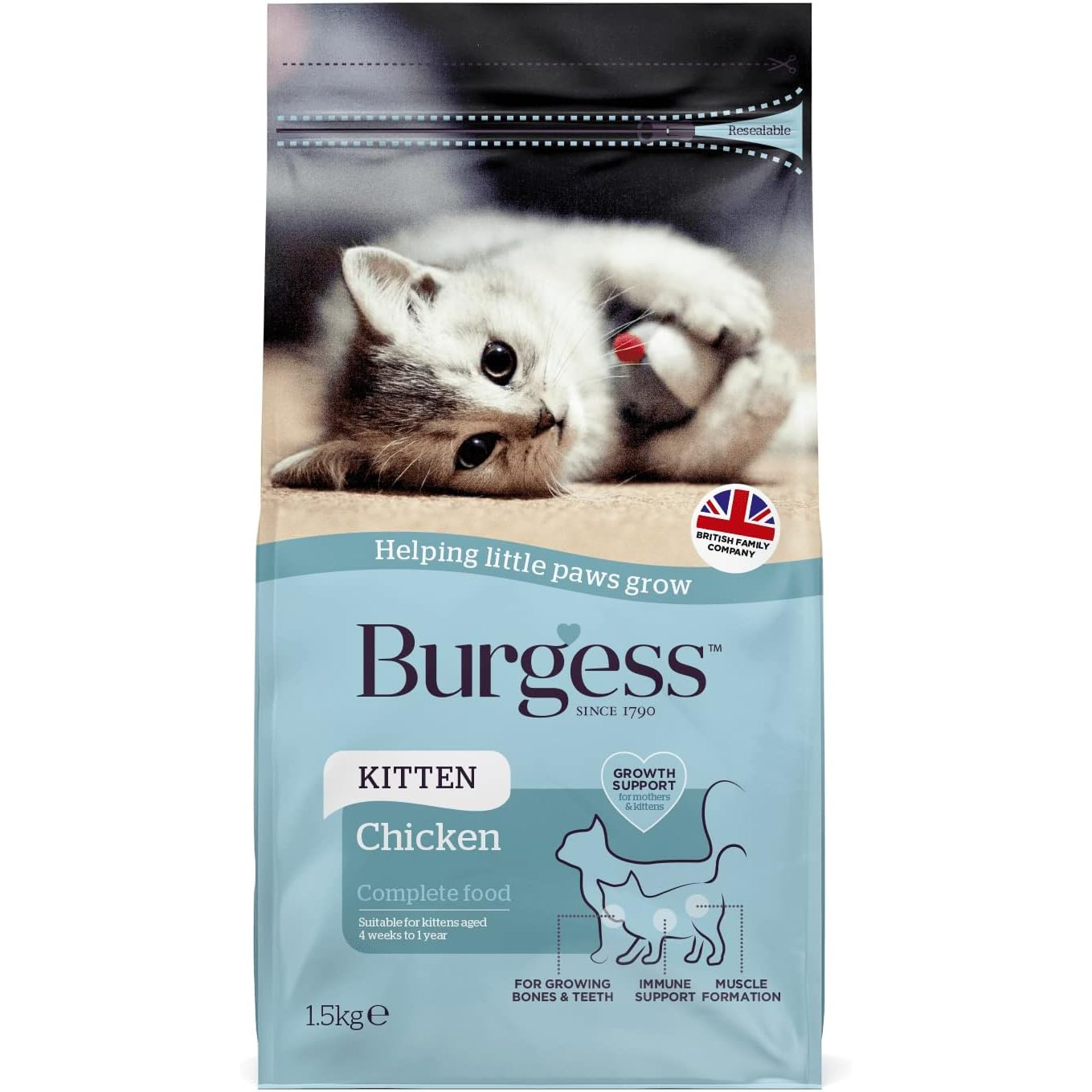
| Life stage | Kitten |
| Flavor | Chicken |
| Volume | 1.5 kilograms |
| Protein | 32% |
Kittens have different dietary requirements than adult cats. They typically need higher protein levels and calories because they have more energy and burn more calories. They need more calcium and phosphorus to encourage healthy bones and teeth and omega fatty acids for cognitive development and good skin and coat health.
Burgess Dry Kitten Food is formulated for kittens between the ages of 4 weeks and 1 year old, and it can also be fed to nursing mothers as they will pass the essential vitamins and minerals on in milk. Burgess Dry Kitten Food contains 28% poultry meal, which isn’t as high as premium foods, like Lily’s Kitchen, but is good compared to a lot of other lower-priced brands.
It also uses grains to help deliver the requisite levels of vitamins and minerals. If you find your kitten showing signs of food sensitivities, it may be worth changing to a grain-free diet.
However, Burgess Dry Kitten Food is popular and palatable with cats, has good protein and vitamin and mineral levels, and it is an inexpensive kitten food that lasts.
- 28% meat content
- Affordable
- Smaller kibble is easier for kittens to eat
- Contains lots of grains
5. Purina One Senior Chicken & Whole Grain
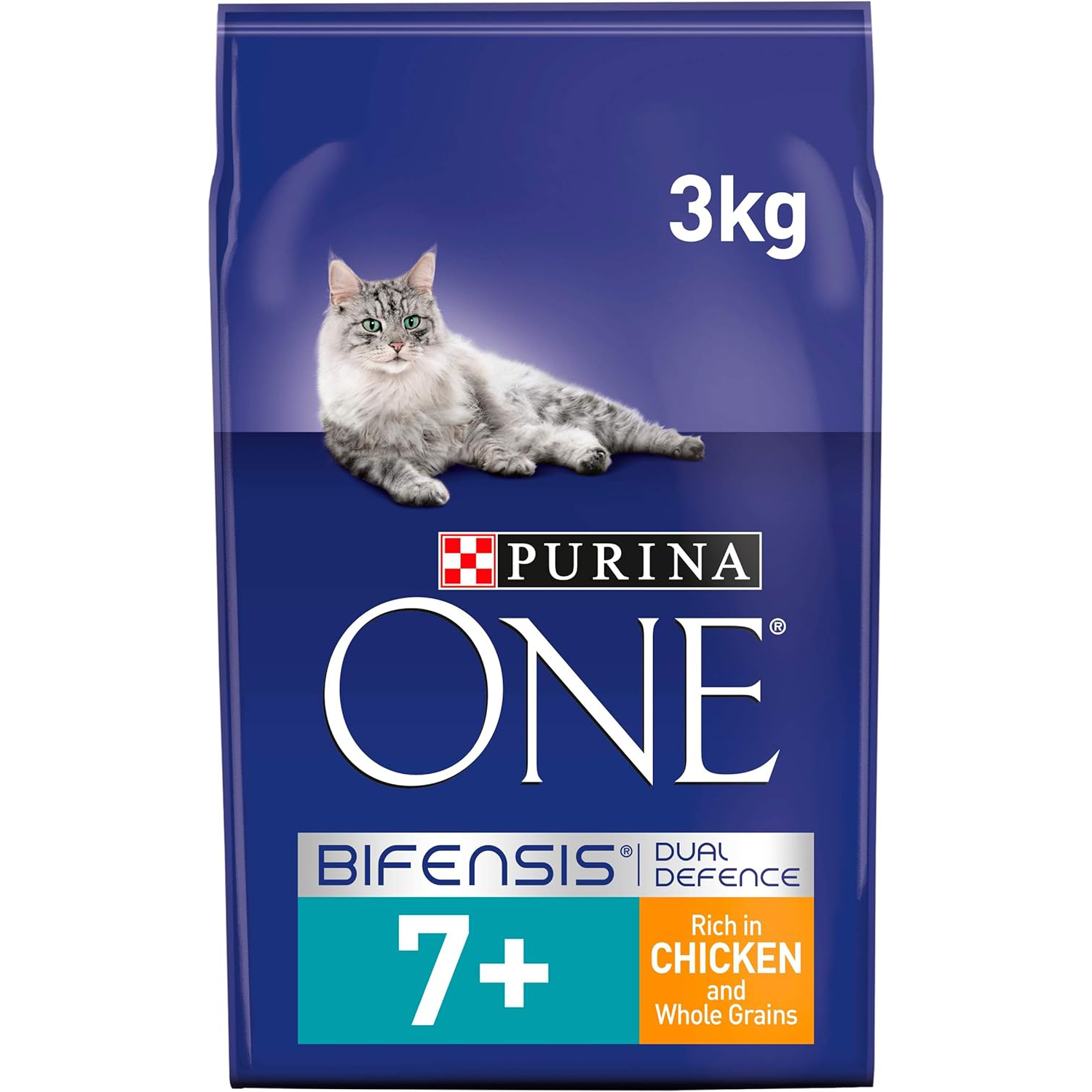
| Life stage | Senior |
| Flavor | Chicken & Whole Grain |
| Volume | 3 kilograms |
| Protein | 35% |
As a cat approaches their senior years, they slow down and burn fewer calories. As with people, older cats are also more prone to certain health conditions and illnesses. Their teeth tend to be in poor condition, making eating brittle food uncomfortable, and senior cats are especially prone to kidney disease.
Typically, senior cat food needs fewer calories but more protein in their diets, and the food needs to be easy to eat, easy to digest, and still appealing to your aging feline companion. Purina One Senior Chicken & Whole Grain is a dry food that targets senior cats.
It contains 35% protein, which is higher than the typical 30% found in adult dry cat food. The kibble is softer than adult food, so is suitable for older cats with bad teeth. It also contains 24 vitamins and minerals, including vitamins C and E, supporting good kidney health. The food is quite expensive and only contains 17% chicken, but it targets the requirements of senior felines.
- Softer kibble is ideal for aging teeth
- Vitamins C and E help protect the kidneys
- 35% protein is suitable for aging felines
- Only 17% chicken ingredients
- Expensive
6. James Wellbeloved Light Adult Turkey
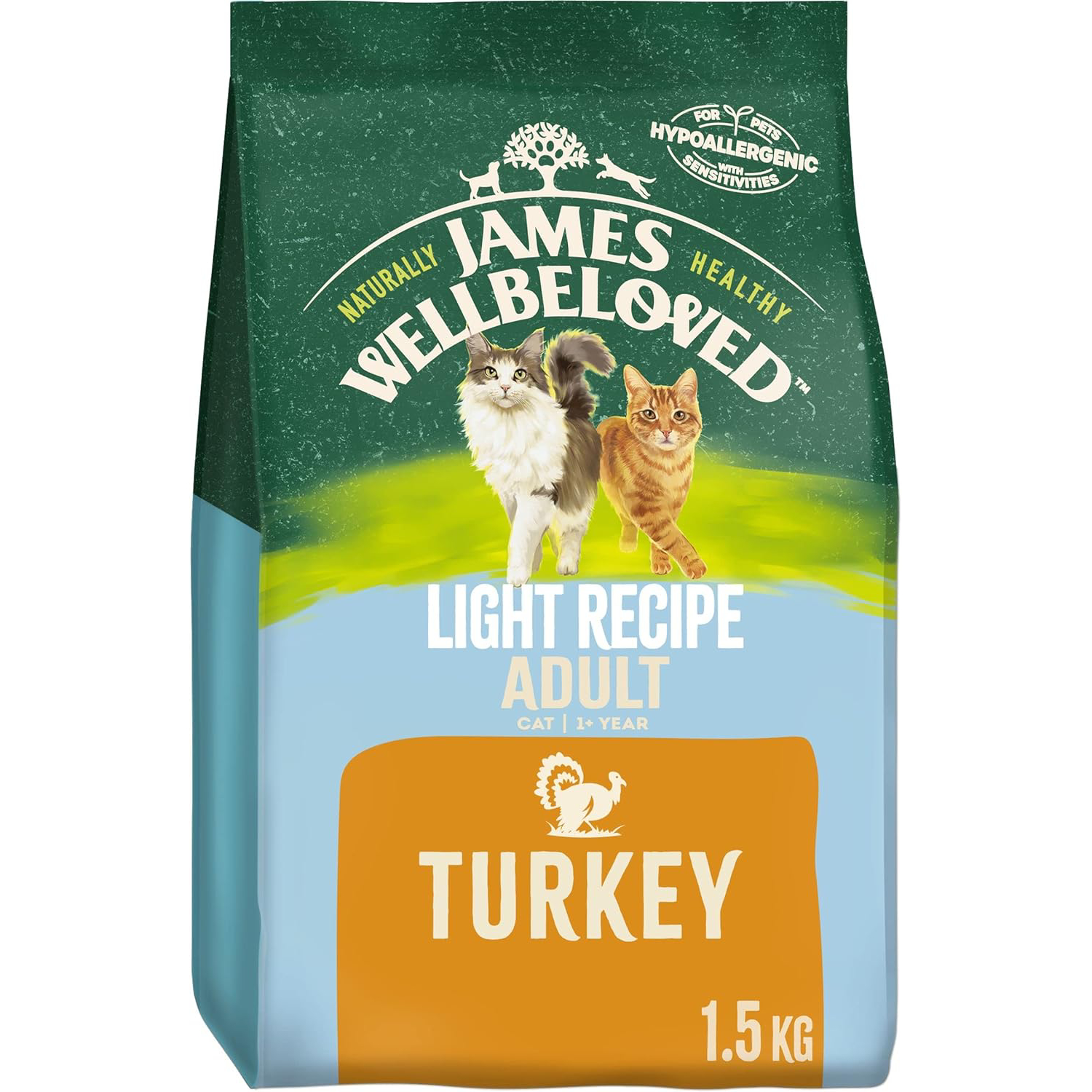
| Life stage | Adult |
| Flavor | Turkey |
| Volume | 1.5 kilograms |
| Protein | 34% |
Overweight and obese cats are more prone to diseases, including diabetes and liver disease, as well as physical conditions like arthritis and lameness. But, unlike humans, it is impossible to convince a cat that they should eat less to lose weight. Light cat food has fewer calories and less fat while offering appropriate protein and other essential vitamins and minerals.
Ideally, this type of food should be combined with exercise to lose weight. James Wellbeloved Light Adult Turkey is a dry cat food with more than 34% turkey, turkey fat, and turkey gravy. Turkey meat is lean and high in iron and other minerals, so it is a good choice for dieting felines.
James Wellbeloved does not contain artificial additives and is described as a hypoallergenic food with a single protein source, so it should be suitable for cats with sensitive stomachs and dietary sensitivities. James Wellbeloved food is expensive, but it is because of its reasonable meat content levels and natural ingredients.
- 34% turkey ingredients
- Hypoallergenic food is suitable for sensitive stomachs
- Contains yucca extract to reduce stool odors
- Expensive
- Best when combined with exercise
7. Royal Canin Appetite Control Sterilised Dry Cat Food
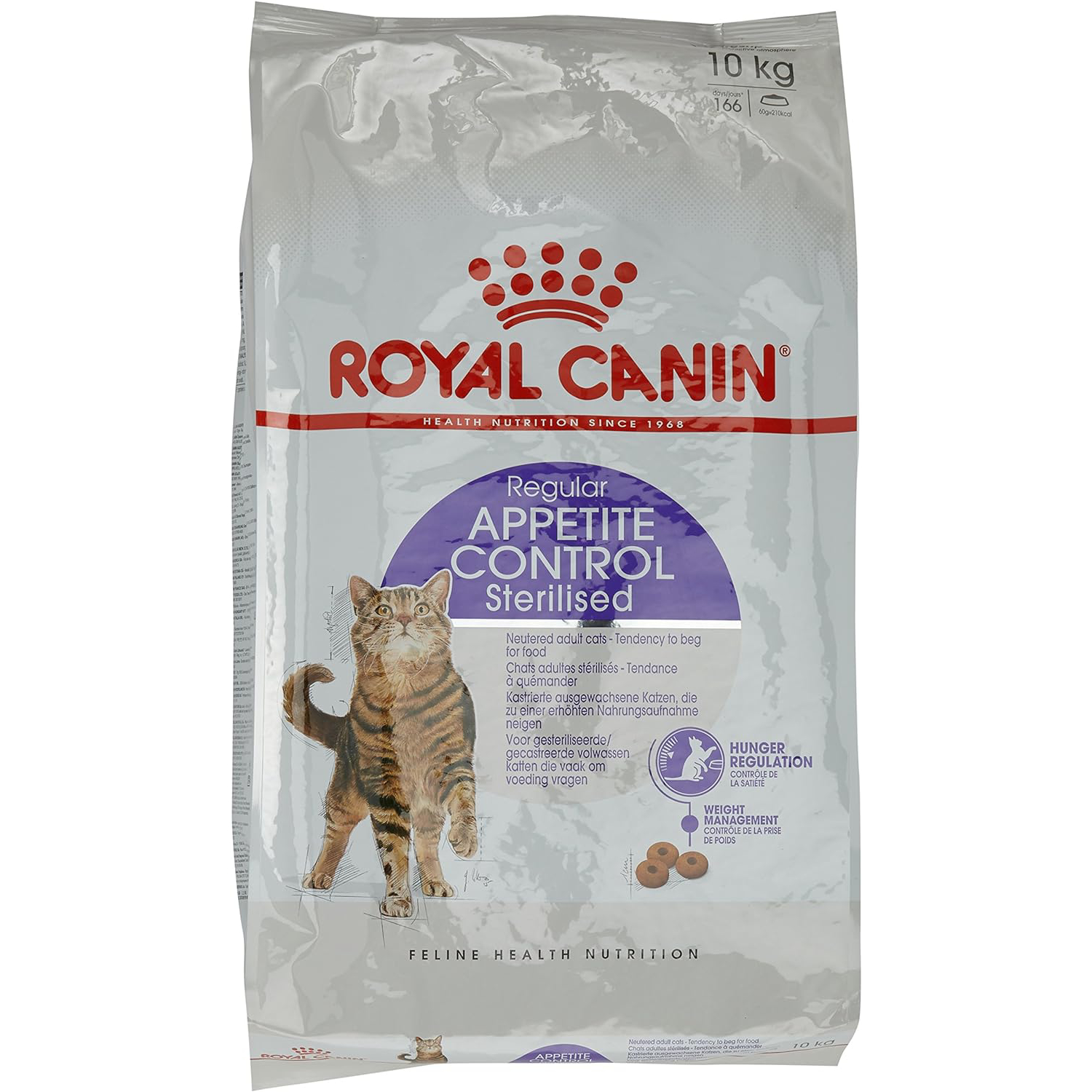
| Life stage | Adult |
| Flavor | Poultry |
| Volume | 10 kilograms |
| Protein | 34% |
When a cat has been spayed or neutered, they tend to be less energetic. They are also more prone to urinary tract stones because they move less and consume less water. Certainly, not all fixed cats will suffer from urinary tract stones, but it is worth avoiding food high in magnesium.
The stones contain a lot of magnesium, so less of the mineral in the food makes it more difficult for the stones to form. Similarly, not all fixed cats must be fed a diet or eat light food. Royal Canin Appetite Control Sterilised Dry Cat Food has 34% protein while minimizing calories and fat content.
Even the kibble itself has been manufactured with a hole in the center so that your cat will feel like it’s eating a lot of food without piling on the calories. Its primary ingredient is dehydrated poultry protein, and there is no magnesium listed, but it contains grains, so it may not be suitable for cats with sensitive stomachs.
Royal Canin is an expensive food, even for this giant 10-kilogram bag.
- No magnesium helps prevent struvite stones
- Designed to minimize weight gain in fixed cats
- Primary ingredient is a good protein source
- Food is expensive
- Large bag might be difficult to store
8. IAMS For Vitality Hairball Reduction Dry Cat Food
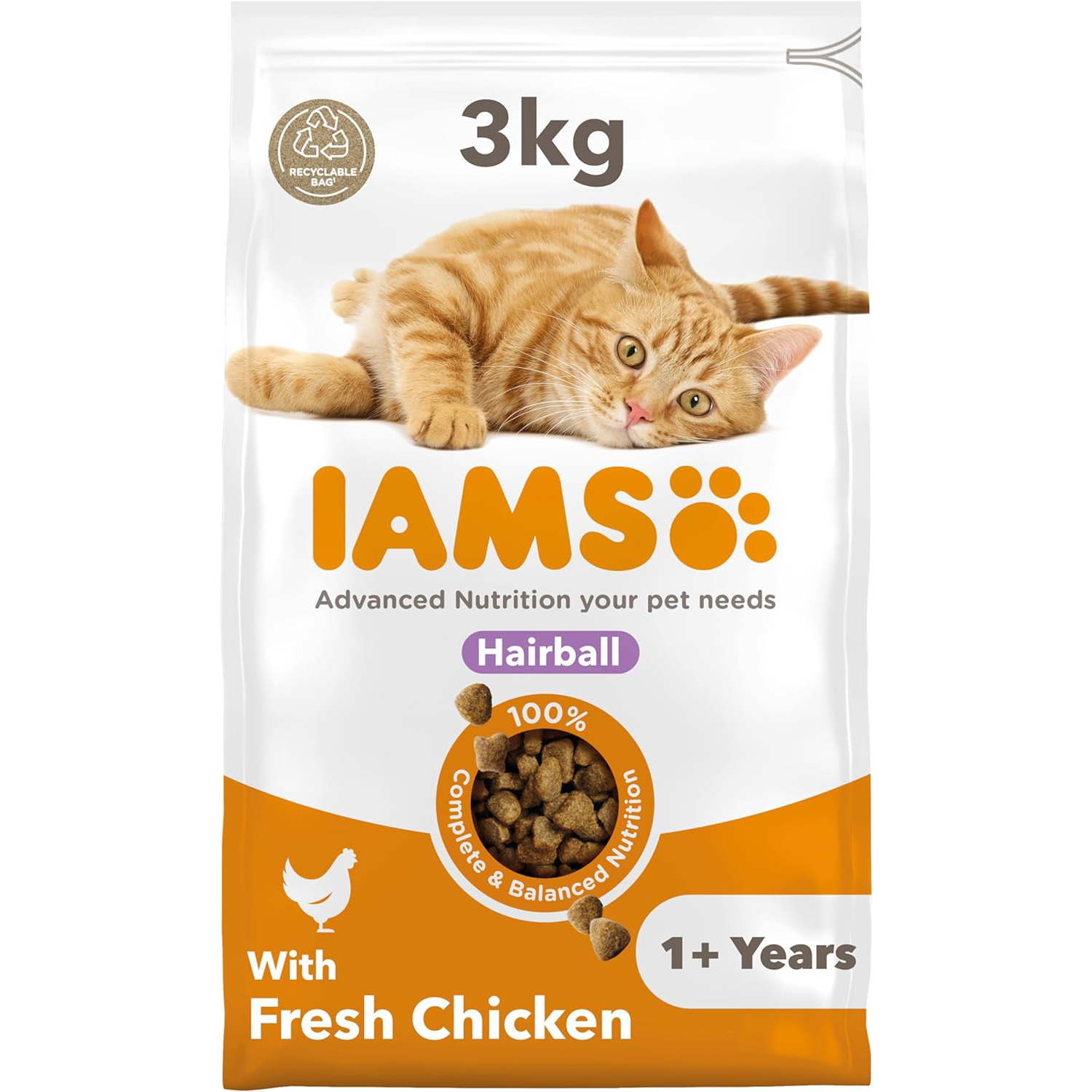
| Life stage | Adult and Senior |
| Flavor | Poultry |
| Volume | 3 kilograms |
| Protein | 35% |
Hairballs can be a common problem with long-haired breeds. Although a one-off hairball is not a massive cause for concern, regular hairball production may be a sign of a bigger problem. Plus, finding a soft, gooey hairball on the kitchen floor is never pleasant. Common causes include skin conditions that cause excessive grooming and gastrointestinal complaints.
IAMS For Vitality Hairball Reduction Dry Cat Food is hypoallergenic and does not contain wheat. It is also made with 41% dried chicken and turkey, and 89% of the total protein in the food comes from meat-based sources. IAMs has an average price, but if your cat regularly produces hairballs, it could help.
- 89% meat-based sourced
- 6% fiber helps prevent hairballs
- Contains no wheat
- Contains maize, which can be difficult to digest
9. Harringtons Complete Senior Dry Cat Food
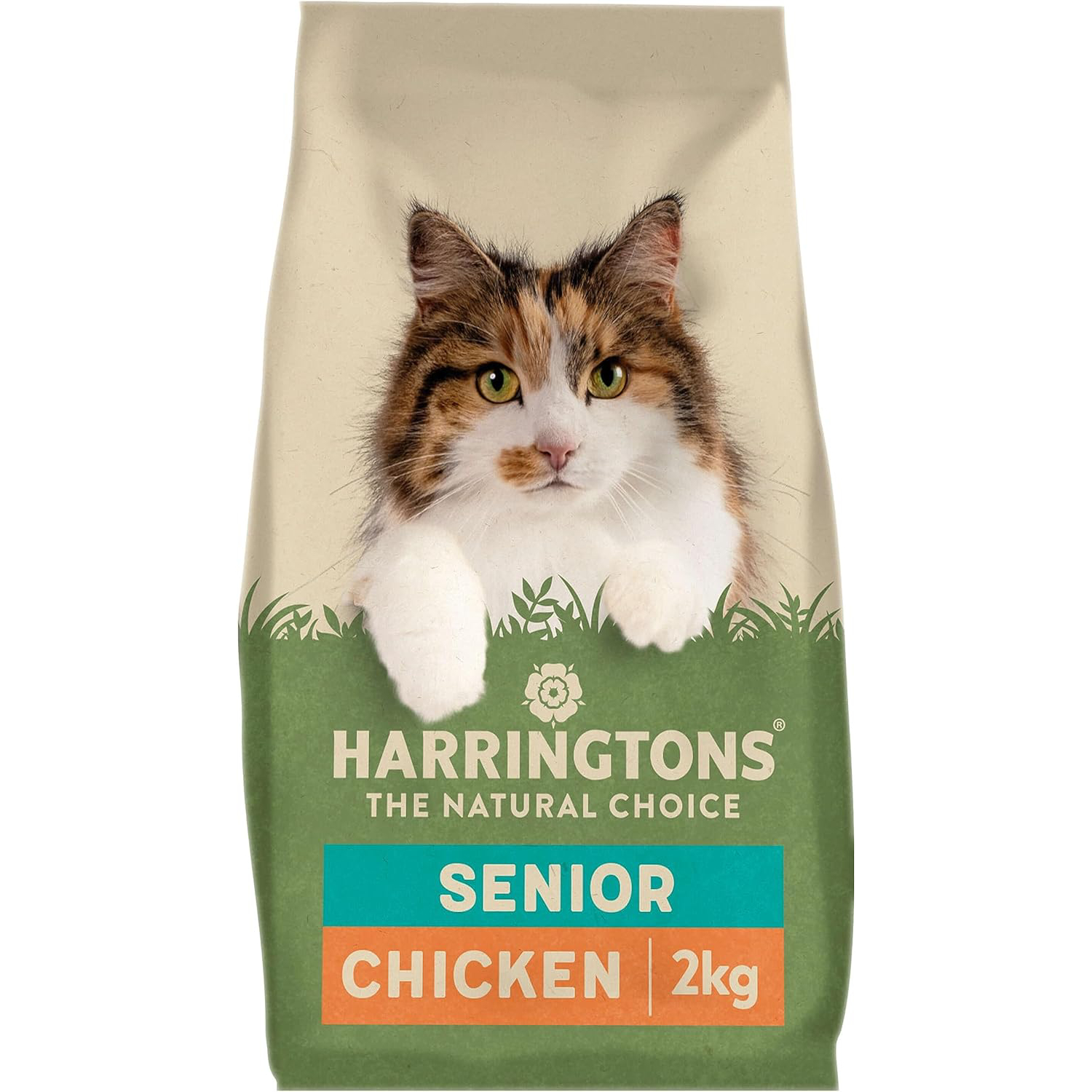
| Life stage | Senior |
| Flavor | Chicken |
| Volume | packs, 2 kilograms each |
| Protein | 30% |
Harringtons Complete Senior Dry Cat Food is an inexpensive dry kibble formulated for senior cats. It consists of 33% chicken and meat meals, giving it a 30% protein and 10% fat ratio. It is made using natural ingredients and contains taurine, which has proven essential for cats for its benefits to good heart health.
The food is very reasonably priced and contains natural ingredients, although it can be rich for some senior cats. Try gradually replacing an existing food with the new food over 2–3 weeks. If your cat shows signs of vomiting or diarrhea, stop feeding them and either slow down the introduction or try changing to a different senior food.
- Affordable
- Ideal for senior cats
- Too rich for some seniors
10. Lifelong Complete Dry Cat Food
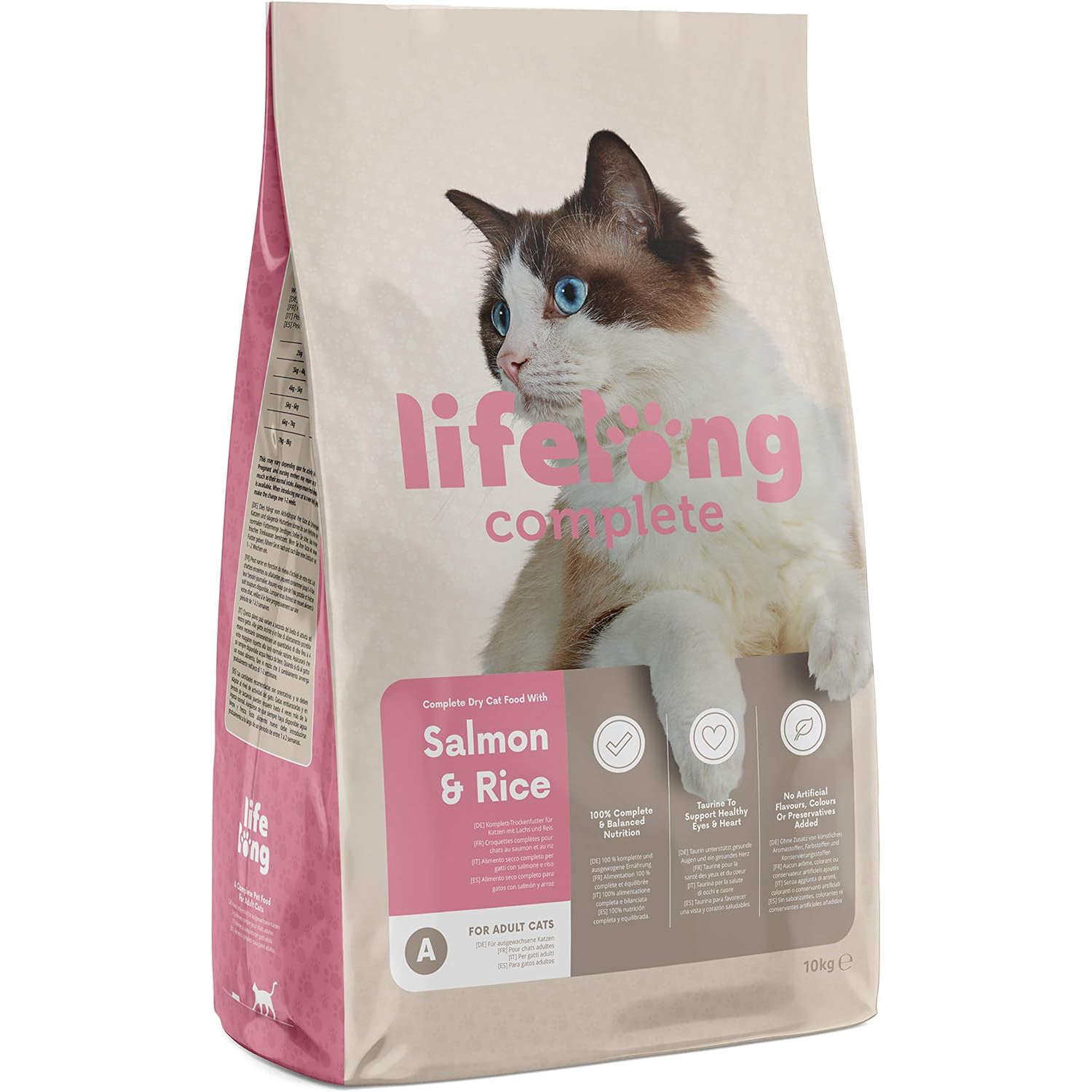
| Life stage | Adult |
| Flavor | Salmon & Rice |
| Volume | 10 kilograms |
| Protein | 34% |
Lifelong Complete Dry Cat Food is a salmon and rice-flavored dry food suitable for adult cats. It contains approximately 30% meat and fish content and has a 34% protein ratio. The food contains natural prebiotics, which help maintain good gut health in your cat, while biotin, zinc, and omega-3-rich salmon all help ensure good coat and skin health in your cat, too.
The food is Amazon’s brand and has reasonable meat content compared to other cheap brands, but it is roughly average priced, and they’re arguably better quality foods for less money.
- 34% protein ratio
- Biotin, zinc, and salmon encourage good coat health
- Only 30% meat content
- Expensive
- Not a trusted brand
Buyer’s Guide: How to Pick the Best Dry Cat Foods in the UK
Getting the right cat food means choosing one that best meets your cat’s dietary requirements and is convenient for you. As well as the cost, consider the following when choosing the best dry cat food.
3 Benefits of Dry Cat Food
Dry food comes in a biscuit or kibble after the ingredients have been processed, but it is combined with a binding agent to ensure the food retains its shape. There are pros and cons to all types of cat food. Dry food, for example, is not usually as palatable as wet food and is. You will need to ensure that your cat has a constant and freely available source of drinking water, especially when on a diet of only dry food. The main benefits of dry cat food are:
- Affordability – Although there are premium dry foods that contain 80% meat or more and have a high price tag, feeding dry food usually costs less than wet food and certainly costs less than a raw food diet.
- Ease – Dry food can be left out while you’re at work, while other food types need to be cleaned up. Plus, it doesn’t need to be hydrated or mixed with other ingredients in most instances.
- Shelf Life – Once opened, wet food needs to be refrigerated and used within a day or two. Dry food can be stored in the cupboard and will usually keep for weeks or even months before the quality starts to degrade.
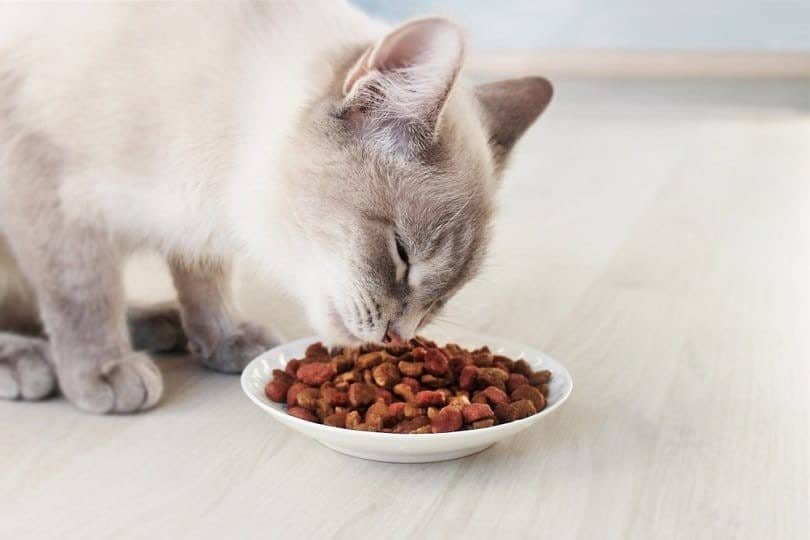
Alternatives to Dry Cat Food
Although dry food is a popular feeding solution, there are alternatives, and you should choose the type of food that best suits your feline friends. Alternatives include:
- Wet Food – Wet food contains similar ingredients to dry food but is processed differently. It uses gravy, jelly, or another source of moisture that sits around the primary ingredients and keeps the food moist. Wet food hydrates and feeds, which can be beneficial because cats don’t always like to drink water from a bowl. Wet food is usually more expensive than dry food, and you will need to remove leftovers after a couple of hours.
- Raw Food – A raw food diet is designed to mimic the natural diet of a cat. It consists almost solely of meat, and you must be very careful to ensure you meet all feline dietary requirements, or your cat could suffer vitamin and mineral deficiencies and become ill. Raw feeding takes more work than dry and wet food alternatives, and as well as being the most labor and research-intensive, it can be the most expensive.
- Combination – A combination diet consists of two or more food types, which affords you the benefits of each form. For example, some owners feed wet food at dinner but leave a bowl of dry food in the morning. Alternatively, you can feed a smaller portion of dry food and supplement it with raw food to give a varied and complete diet.

Cat Food Types
Gone are the days of having limited cat food options. There are dry cat foods available for different ages of cats, as well as breeds, coat length, health conditions, and more.
Lifestage-Specific Foods
Kittens, adult cats, and seniors all have different dietary requirements. Kittens tend to burn more calories than adults. And, while seniors will move around a lot less, they need more protein because their body needs it to digest food and perform other essential functions.
Cats of different ages also have different vitamin and mineral requirements, with kittens benefiting from high levels of calcium and phosphorus and senior cats benefiting from avoiding magnesium. Although it shouldn’t do any harm to feed a cat the wrong life-stage food as a one-off, regularly feeding the wrong food can lead to deficiencies and health problems.
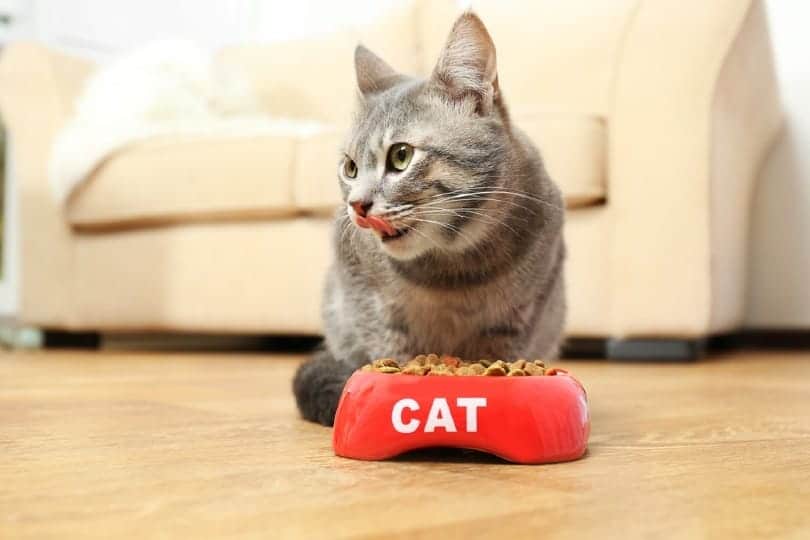
Breed Specific Foods
Different breeds of cats have different characteristics. Some are more energetic than others, while factors such as coat length and likely health conditions also vary according to breed. Breed-specific foods are formulated to meet your cat’s specific requirements, but the rarer the breed, the more difficult it can be to find an appropriate food.
Dietary Specific Foods
Some cats have specific dietary requirements. For example, overweight cats benefit from higher fiber and fewer calories in their food. Allergies and sensitivities also carry specific dietary requirements, while conditions like kidney disease demand a specific dietary formulation.
Protein & Its Role in Cat Nutrition
Cats are obligate carnivores, and in the wild, they get all of their dietary needs from meat sources, and the only plant sources they would eat would come from the stomachs of their prey. They get vitamins and minerals from the skin, organs, and other parts of the meat they eat.
As such, a cat’s digestive system and biological requirements are best met with meat-based protein rather than plant-based, although most foods contain fruits, vegetables, and other ingredients to help meet taurine requirements.
Typically, it is recommended that dry cat food has a protein ratio of at least 26% for healthy adult cats, while kittens and growing cats need 30% protein. Senior cats need between 35% and 40% protein levels.
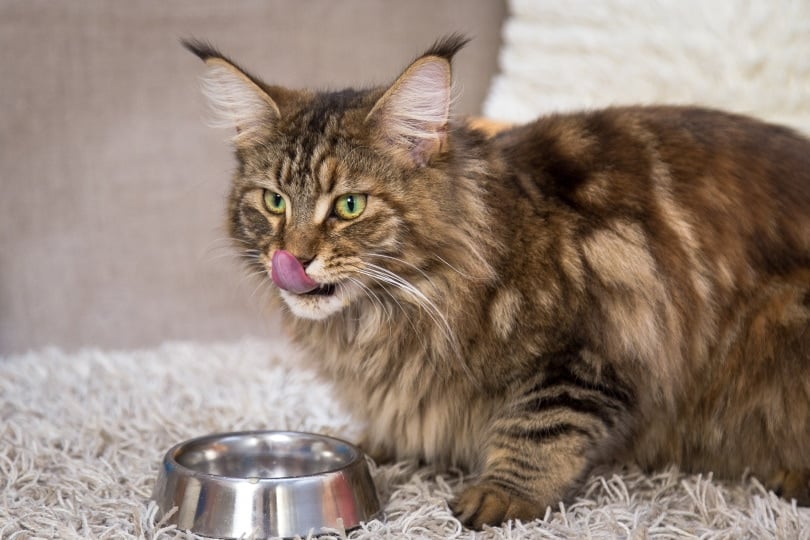
How Often Should I Feed My Cat?
How often you should feed your cat depends on your cat’s age and other factors. Kittens can be fed twice daily but might benefit from smaller meals more often. Adult and senior cats also do well when fed on the same schedule twice a day, but some research¹ suggests adult cats only need to eat once daily.
Can I Combine Dry & Wet Food?
You don’t need to choose between wet and dry cat food. Feeding both can benefit you and your cat by offering the best of both worlds. Remember that wet food should only be left out for about an hour, and you can serve it when you’re around and leave dry food down when you’re not at home. Ensure that you don’t overfeed them because it can cause weight gain and other health problems.
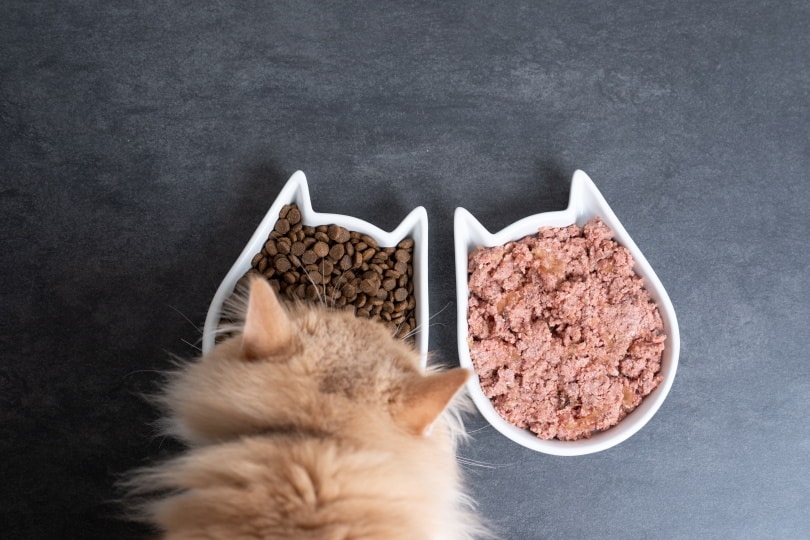
How Much Should I Feed My Cat?
The amount your cat should be eating is primarily determined by their size, but you should also feed them according to the size you are aiming to achieve, especially if your cat is overweight. Follow the food manufacturer’s guidelines unless your vet has told you to feed a specific amount.
Final Thoughts
Choosing the best dry cat food requires finding one your cat enjoys eating and meets dietary requirements. Fortunately, there is a vast number of dry foods on the market, including Purina One Adult Dry, which we believe is the best overall dry cat food in the UK, and Whiskas 1+ Adult Complete, which offers the best value for money for a dry adult cat food.
Featured Image Credit: Pixel-Shot, Shutterstock
Contents
- A Quick Look at Our Favorites in 2024
- The 10 Best Dry Cat Foods in the UK
- 1. Purina One Adult Dry Cat Food – Best Overall
- 2. Whiskas 1+ Complete Dry Cat Food – Best Value
- 3. Lily’s Kitchen Chicken Casserole Complete Adult Dry Cat Food – Premium Choice
- 4. Burgess Dry Kitten Food – Best for Kittens
- 5. Purina One Senior Chicken & Whole Grain
- 6. James Wellbeloved Light Adult Turkey
- 7. Royal Canin Appetite Control Sterilised Dry Cat Food
- 8. IAMS For Vitality Hairball Reduction Dry Cat Food
- 9. Harringtons Complete Senior Dry Cat Food
- 10. Lifelong Complete Dry Cat Food
- Buyer’s Guide: How to Pick the Best Dry Cat Foods in the UK
- 3 Benefits of Dry Cat Food
- Alternatives to Dry Cat Food
- Cat Food Types
- Protein & Its Role in Cat Nutrition
- How Often Should I Feed My Cat?
- Can I Combine Dry & Wet Food?
- How Much Should I Feed My Cat?
- Final Thoughts

